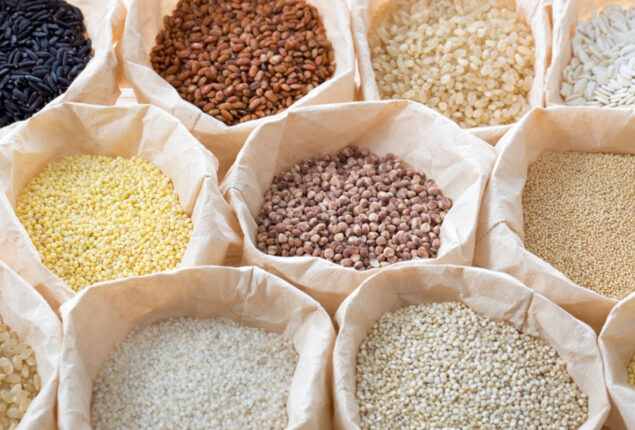Eat Mindfully: Tips for Incorporating the Practice into your Daily Routine
Practicing mindful eating can give you a chance to slow down. Mindful...

Are you Properly Consuming your Millets?
Millets are rapidly gaining popularity due to its numerous benefits, but a nutritionist warns that the phytic acid in them may hinder the absorption of other nutrients. Additionally, it may be harmful to the gut health of some individuals. Anupama Menon on how to properly incorporate millets into your diet.
Millets are one of the oldest cultivated grains and have been around for thousands of years. It used to be a staple in many parts of the country, but over time, it got lost somewhere.
The millet family includes sorghum (jowar), proso (chena), pearl (bajra), foxtail (kakum), finger millet (ragi), browntop (korle), barnyard (sanwa), and little millet (moraiyo). Millets are one of the low-GI foods that can prevent spikes in blood sugar because they are high in complex carbs. Millets’ insoluble fiber serves as a prebiotic, introducing beneficial bacteria to your digestive tract. This makes your stool denser and prevents constipation.
Additionally, they aid in the reduction of bad cholesterol, a risk factor for heart disease. Millets contain vitamin A, vitamin B, phosphorus, potassium, antioxidants, niacin, calcium, and iron, among other nutrients.
In a conversation with HT Digital, nutritionist Anupama Menon noted that phytic acid in millets is an anti-nutrient that may reduce the absorption of other nutrients. Despite the fact that the grain is gluten-free and high in fiber, many people are in love with millets. Additionally, due to its slow digestibility and high fiber content, some individuals may experience digestive issues.
According to Menon, despite the numerous health benefits of millets and the fact that incorporating these wonder grains into one’s lifestyle can help prevent numerous chronic diseases, one must gradually incorporate millets into one’s diet because some individuals may find them to be detrimental to their digestive health. However, the drawbacks of these grains may be eliminated by soaking millets before consumption.
“The nutrition community builds on information that is translated through various mediums and adds expert perspectives based on research and dialogue. As a result, the terms “dairy free,” “vegan,” “gluten free,” “keto,” and other variations emerged. We must never lose sight of the fact that we are all unique, despite the fact that each of these ideas is well-known and has been the subject of extensive research, and adhering to its well-defined principles has numerous benefits. According to Anupama Menon, “there is no rule in the book that says every product touted as being healthy has to work well for each one of us.” Our digestive systems react differently to various groups of food.
She goes on to say, “So each of us needs to look at every recommendation from experts with an eye of curiosity and experiment, and filter in only those that energies us and have no negative impact on our gut, sleep, or health,” and she concludes by saying that each of us should do the same.
Vitamins B-complex and fiber are abundant in all millets. Based on the type of millet, they are full of minerals like magnesium, calcium, and potassium, making them strong competitors.
“The disadvantage is that they contain phytic acid, which is an anti-nutrient that could reduce the absorption of other nutrients.” Millets must be soaked and gradually introduced into the diet. However, the anti-nutrient can be broken down and its negative effects minimized by soaking, sprouting, or fermenting the millets. Some individuals may have digestive issues as a result of the product’s high fiber content and slow digestion. Before altering the grain frequently or substituting it for wheat, it is essential to observe how one does on millets. “It’s best to start with the lighter grains like Ragi and foxtail millets, and then move on to a variety like Jowar and Bajra,” Menon says about how to eat millets correctly and gradually.
Menon says that people with thyroid problems shouldn’t eat millets because they contain goitrogens that might make it harder for iodine to be absorbed. These goitrogens might be reduced during cooking, but they won’t completely disappear. Millets must therefore be avoided by hypothyroid patients.
Therefore, while millets may be an excellent addition to your diet, it is essential to know how much to consume. Find the foods that work best for you by relying on your gut. “I say, ‘nor does your gut,’ as they say, ‘your blood never lies’,” Anupama Menon concludes.
Catch all the Diet News, Health Fitness News, Breaking News Event and Latest News Updates on The BOL News
Download The BOL News App to get the Daily News Update & Follow us on Google News.